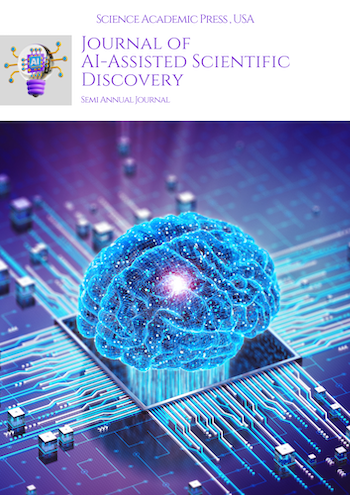Published 25-11-2021
Keywords
- Semiconductors,
- AI chips,
- artificial intelligence,
- machine learning,
- smart devices

This work is licensed under a Creative Commons Attribution-NonCommercial-ShareAlike 4.0 International License.
Abstract
The semiconductor industry is the fulcrum of digital revolution in the contemporary era, driving cutting-edge technologies that characterize the world today as being interconnected. Increasing demands for smart, rapid, and efficient computing continue to drive semiconductor innovation to new frontiers of possibility. In the next decade, the world semiconductor market will see explosive growth driven by disruptive technologies like artificial intelligence (AI), autonomous cars, 5G networks, and the Internet of Things (IoT). Of these, AI semiconductors, or AI chips, are proving to be a game-changer, offering peak processing and power efficiency for demanding machine learning and deep learning applications.
AI chips represent a new frontier in microprocessor design, created to speed up AI computations with unprecedented speed and efficiency. Unlike regular processors, the chips have specialized architectures, including neural processing units (NPUs) and tensor processing units (TPUs), to maximize AI workloads. Their reach spans across industries, ranging from automobile innovation supporting autonomous capability to intelligent homes with intelligent automation, robotics revolutionizing manufacturing, and AI-driven healthcare innovations. As more industries rely on AI-driven decision-making, development of semiconductor technology will play a defining role in determining the future digital economy.
This piece discusses the sudden surge of AI chips, in the wake of crucial technology innovations, competition among industries, and future trends that are shaping this new wave of semiconductor advancements. Additionally, it also points to the strategic significance of AI chips to revolutionize industries and fuel digital programs in the future.
Downloads
References
- Chang, M.-F., Chen, A., Chen, Y., Cheng, K.-T. T., Hu, X. S., Ieong, M., Liu, Y., Van der Spiegel, J., Ling, H.-S. P., Yang, J., Yin, S., & Zhu, J. (2018). White Paper on AI Chip Technologies. Beijing Innovation Center for Future Chips (ICFC).
- Chou, W., Shao, J., Chung, R., Chen, L., Chen, A., & Zhou, L. (2019). Semiconductors – The Next Wave. Deloitte Touche Tohmatsu Limited (DTTL).
- Lee, P., Loucks, J., Stewart, D., Jarvis, D., & Arkenberg, C. (2019). TMT Predictions 2020: The Canopy Effect. Deloitte Insights.
- Dong, H., Shengyuan, Z., Tian, Z., Yunji, C., & Tianshi, C. (2019). A Survey of Artificial Intelligence Chips. Journal of Computer Research and Development, 56(1), 7–21. DOI: 10.7544/issn10001239.2019.20180693.
- Garibay, T. Y. (2018). Artificial Intelligence Chips: Past, Present, and Future.
- Khan, S. M., & Mann, A. (2020). AI Chips: What They Are and Why They Matter. Center for Security and Emerging Technology.


